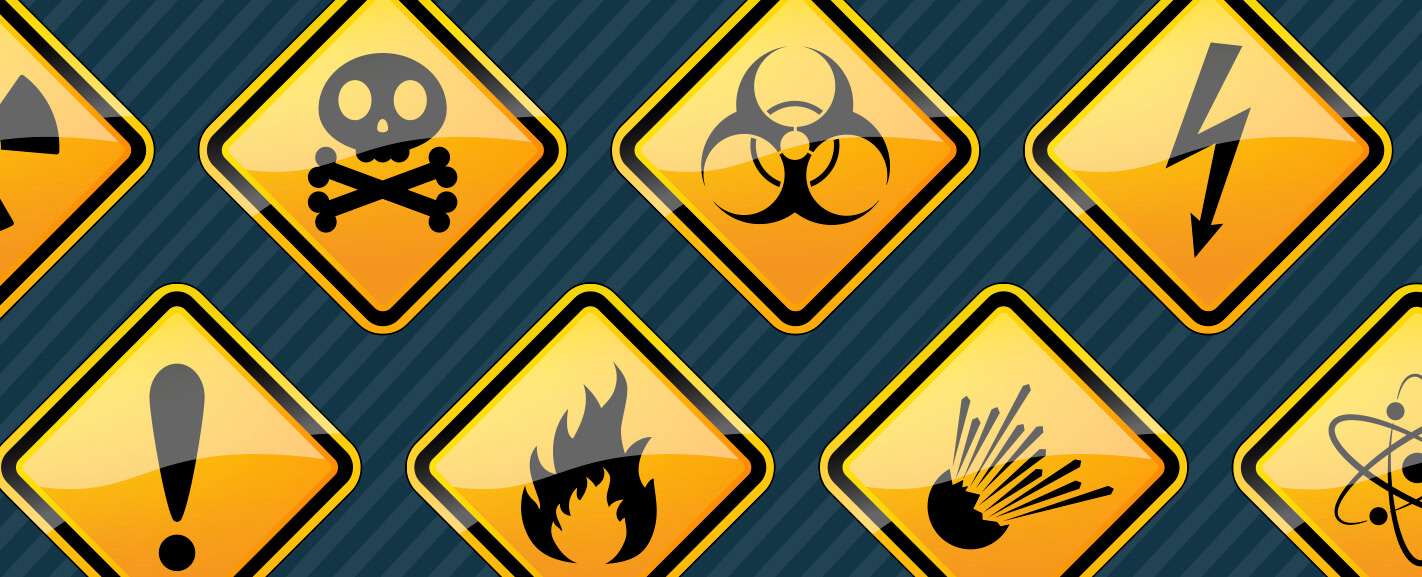
“HAZCOM” is short for “hazard communication.” By definition, HAZCOM comprises a set of processes and procedures providing clear information about potentially dangerous chemical hazards in the workplace. People working with hazardous chemicals must know the potential effects of working with hazards and how to mitigate the dangers.
As a safety professional, you should understand the definition of hazard communication and how to implement it in the workplace to ensure the safety of your workforce. Implementing OSHA’s 1910.1200 Hazard Communication Standard (HCS) requires HAZCOM training for employees. Safety management must meet certain requirements, and failure to do so can result in citations.
What Is the Hazard Communication Standard?
OSHA requires that information about the identities and associated hazards of chemicals must be available and easy to understand for workers.
OSHA’s HCS requires safety professionals to develop and share all relevant information on chemical hazards, including evaluating and classifying them and providing written information in line with the Globally Harmonized System of Classification and Labeling of Chemicals (GHS).
The HCS is based on the premise that people have the right to know and understand the chemicals they work with and the hazards they face. HAZCOM rules have a general industry application, meaning they cover most workplaces in the United States.
Why Is HAZCOM Important?
Every safety professional aims to improve workplace safety. Hazard communication is a proven way to achieve this goal. Proper hazard communication helps every workforce member understand the chemicals they work with, their associated dangers, and the processes to handle them safely.
Avoiding OSHA violations is another essential focus for safety professionals. OSHA citations include costly penalties, and HAZCOM violations are the second most commonly issued citation. Fines related to willful violations can be in excess of $150,000.
Understanding HAZCOM Requirements
HAZCOM requirements include a set of specific processes for employees to follow when they’re working with hazardous chemicals. Safety professionals must follow the following procedures to be compliant with HAZCOM requirements:
Written Program
Any safety professional who oversees employees who work with chemicals must design and write a clear hazard communication program. The HCS specifies how you must communicate any essential information about hazards to keep these employees safe.
You must customize your written communication for your specific application and update it regularly. It should be designed for ongoing use and address every aspect of the HCS in detail.
Chemical Inventory
OSHA requires safety professionals to inventory and document all chemicals in the workplace, which includes everything from cleaning chemicals to chemicals used in manufacturing. The chemicals on your inventory dictate the scope of your safety program.
Like your written communication program, you must keep your inventory updated as you change the chemicals in your workplace.
Safety Data Sheets
You must have a chemical safety data sheet for each chemical on your inventory. These safety data sheets are one of the pillars of successful hazard communication. They communicate the specific hazards associated with each chemical and help develop specific protection measures that meet the workplace’s unique needs.
The GHS requires that the information on safety data sheets appears in the following order:
- Substance and supplier identification
- Hazard identification
- Composition of ingredients
- First-aid steps in case of exposure
- Firefighting steps
- Accidental release safety steps
- Handling and storage
- Exposure controls and personal protection
- Physical and chemical properties
- Stability and reactivity
- Toxicological details
- Ecological details
- Disposal details
- Transport details
- Regulatory details
- Additional details
Employers and safety professionals must provide all employees with complete access to safety data sheets, which can be printed or digital. Workers must have direct access to this information whenever they need it.
Labeling

All chemical containers must be appropriately labeled, including secondary containers used to mix chemicals. Failure to do so is another common OSHA violation.
Safety professionals must establish a workable labeling process and train employees on the process so they can understand the labels. Many labels include pictograms for common hazards, such as “flammable” or “toxic.” The text must be printed in English and legible.
HAZCOM-compliant labels should include the following:
- Product identifier: The name of the material as it appears on the safety data sheet and the identity of each component that could be a health and safety hazard.
- Signal word: A single word to denote the level of danger associated with the material, such as “warning.”
- Hazard pictograms: Pictures outlined in red in diamond shapes to show the general hazards associated with the chemical.
- Hazard statements: Standardized statements outlining the exact hazards of the material.
- Precautionary statements: A set of instructions to help workers protect themselves from exposure and respond correctly if an exposure does occur.
- Supplier information: The supplier’s details, such as name and phone number.
Personal Protective Equipment
Selecting appropriate personal protective equipment is another critical element of HAZCOM. Depending on the chemicals you use, your workers may need respirators, gloves, safety goggles, and many other pieces of equipment to protect themselves. All the equipment must be sufficient to protect workers from any chemical exposure.
What Is HAZCOM Training?
OSHA’s HAZCOM requirements include proper training for all employees to ensure they know how to stay safe when dealing with hazardous chemicals. Training should occur before an employee starts work and when any new chemical is introduced. While annual refresher training is not required, providing employees with opportunities to brush up on their knowledge is always best for safety.
What Should HAZCOM Training Cover?
Training can cover different hazards depending on what is present in a particular workplace. OSHA outlines some topics, such as methods to detect harmful chemicals in the workplace through appearance and odor. It must also have the outcomes of unprotected exposure.
Your employees must receive training on protecting themselves from chemical hazards, including company-specific protocols outlined in the written hazard communication program. Training must include the hazard communication program’s chemical labels, the labeling system and safety data sheets, and the processes to find and use internal safety information.
Trust the National Association of Safety Professionals With Your HAZCOM Training
HAZCOM training is essential to providing a safe environment for workers and avoiding OSHA citations. The National Association of Safety Professionals (NASP) offers courses and certifications within an actionable structure to implement comprehensive safety and environmental management policies and programs essential to a healthy and safe working environment. NASP offers real-world training, by safety professionals, for safety professionals.
Whether you seek an in-depth online hazard communication specialist certificate or a two-day train-the-trainer course, we can help your business stay safe and compliant. Your training does not stop when the procedure is complete — you can tackle our resource library or reach out to one of our caring employees with any questions.
Contact us today to learn more about the practical approach to workplace safety.
Purchase NASP’s Hazard Communication Specialist (HCS) Course






